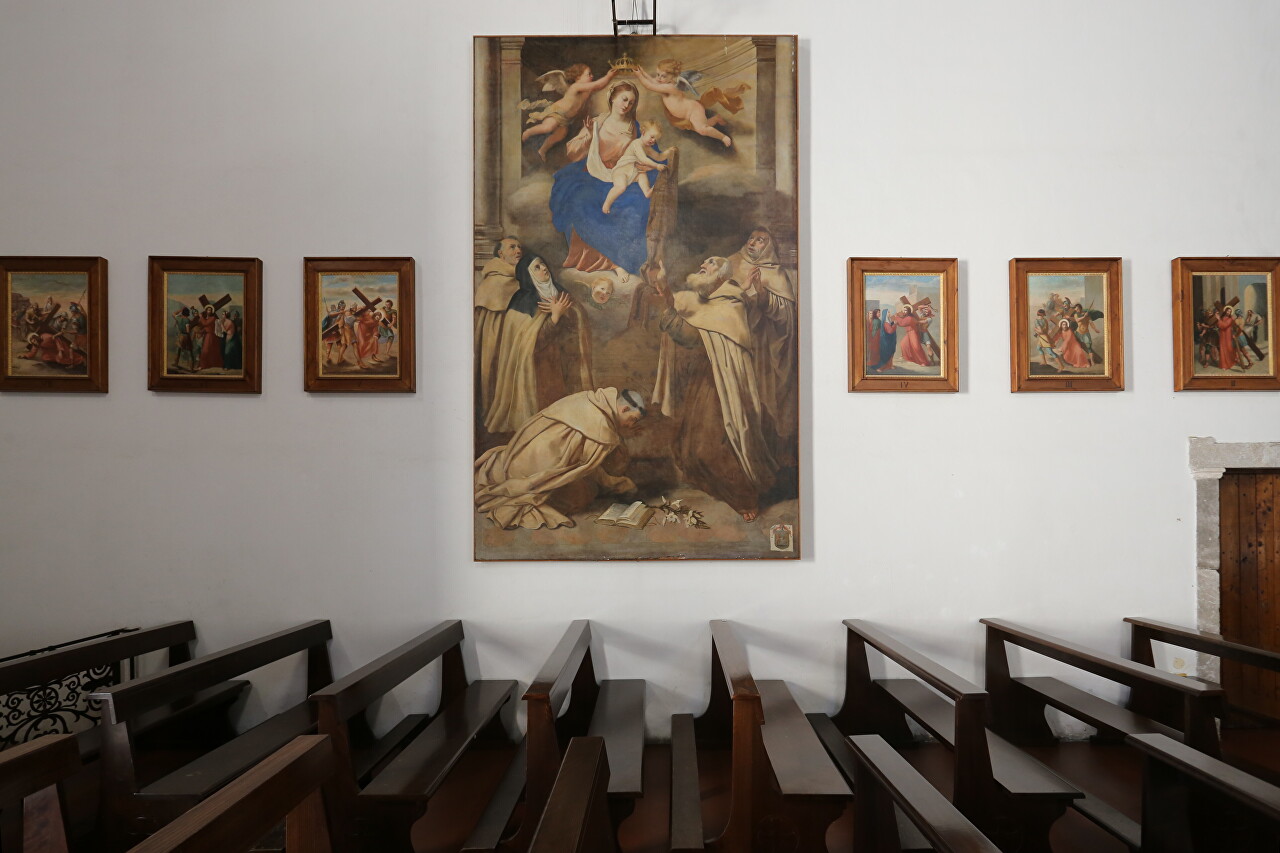Church of St. Catherine of Alexandria. Taormina
At the eastern end of Corso Umberto, next to the Corvaja Palace, is a Baroque church built in the first half of the 16th century on the ruins of the Greek temple of Aphrodite (Chiesa di Santa Caterina d'Alessandria). In 1610, the Capuchin monastery acquired the ancient church of St. Catherine outside the city walls, and built there the new church of St. Anthony of Padua, which can now be seen on Via Capuccini. Apparently, at the same time of the church, the construction of the new Church of St. Catherine of Alexandria began, which ended around 1660. The facade of the church is decorated with a portal made of pink marble, framed by two columns with high bases and Corinthian capitals. In the niche above the portal is a statue of Saint Alexandria, which is supposed to be the work of sculptor Paolo Greco in 1705. At the top of the facade is framed with an ancient Greek style in memory of the temple of Aphrodite. The left corner of the facade is crowned by a single-tiered bell tower with one bell. To the left of the facade is a sacristy with a door and two oval windows decorated with sea shells. Above the window is a partially destroyed bas-relief depicting two figures under a cross. All openings and bas-reliefs are made of soft Syracuse limestone, which is not weather-resistant. The sacristy dates back to the end of the 16th century, it was built before the Church of St. Catherine of Alexandria, with a high probability it was a private chapel of a noble family, and the bas-relief depicts its coat of arms. In the sacristy there is a drinking fountain made of red marble with the inscription Reparatae Salutis Anno 1787.
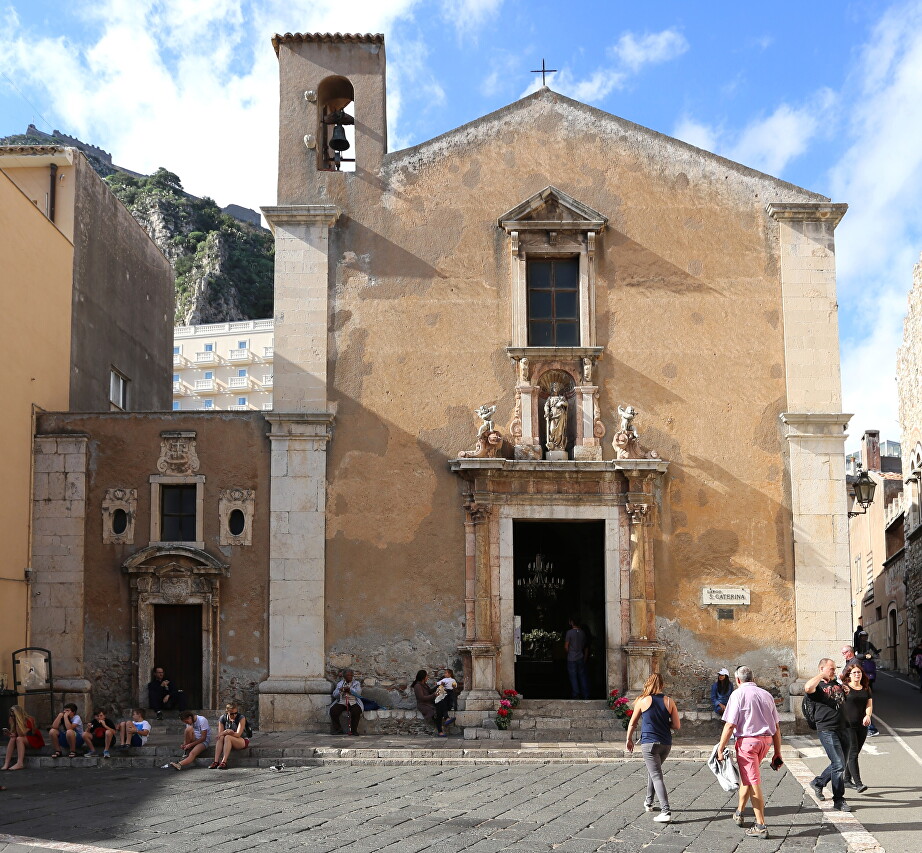
The interior of the church is single-nave, with smooth white walls. At the first column of the right side altar is a statue of St. Catherine of Alexandria, on the basis of which you can read the Roman numerals MCCCCLXXXXIII (1493), there is every reason to believe that this image was in the old church and transferred by the Capuchins to the new one.

The main altar has a lower part (right photo) made of polychrome marble, and the upper part is made of wood, inlaid and painted in the traditions of the 17th century. There are two side altars on the walls next to each other. All altars are framed by double twisted columns made of plaster and richly decorated with stucco.
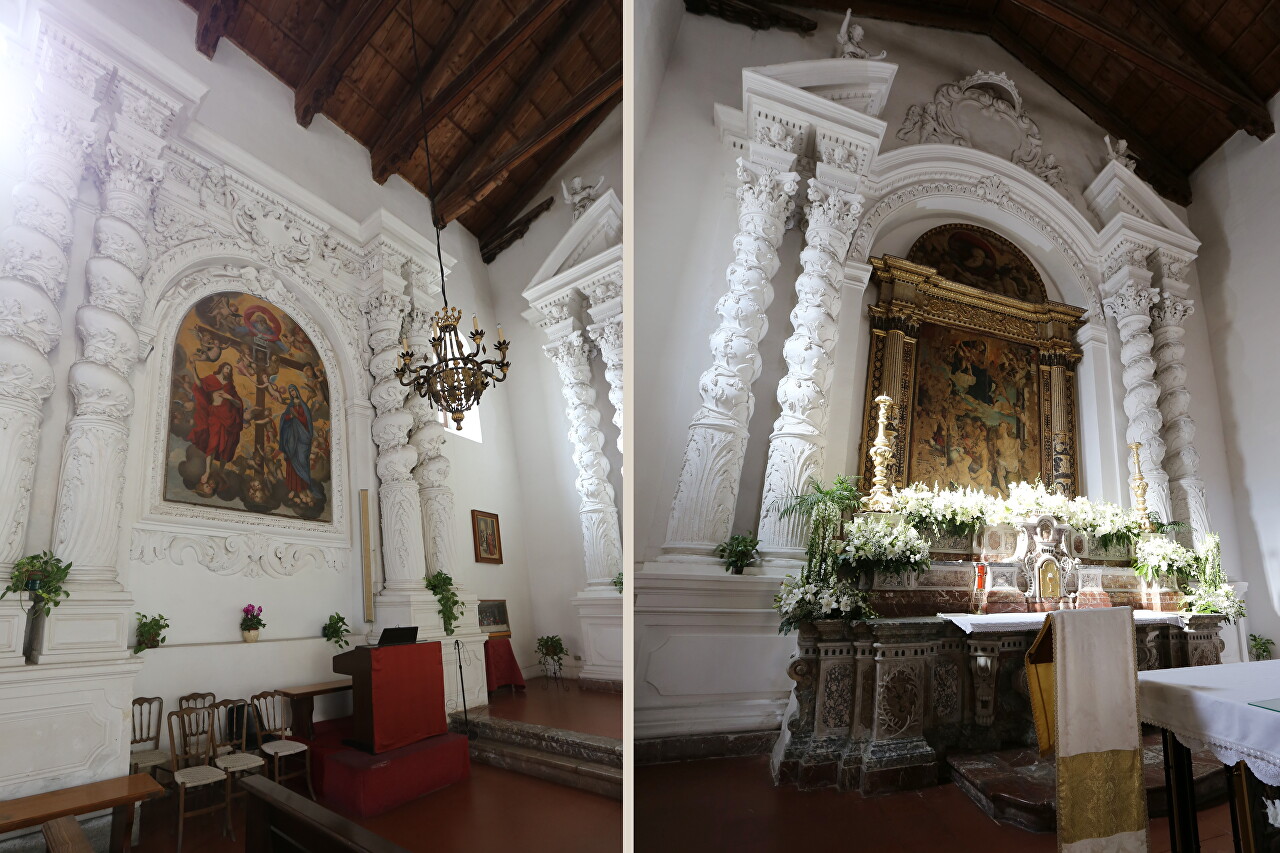
The side walls are decorated with two large paintings by contemporary artists, as well as 12 small paintings depicting episodes and the Passion of Christ.
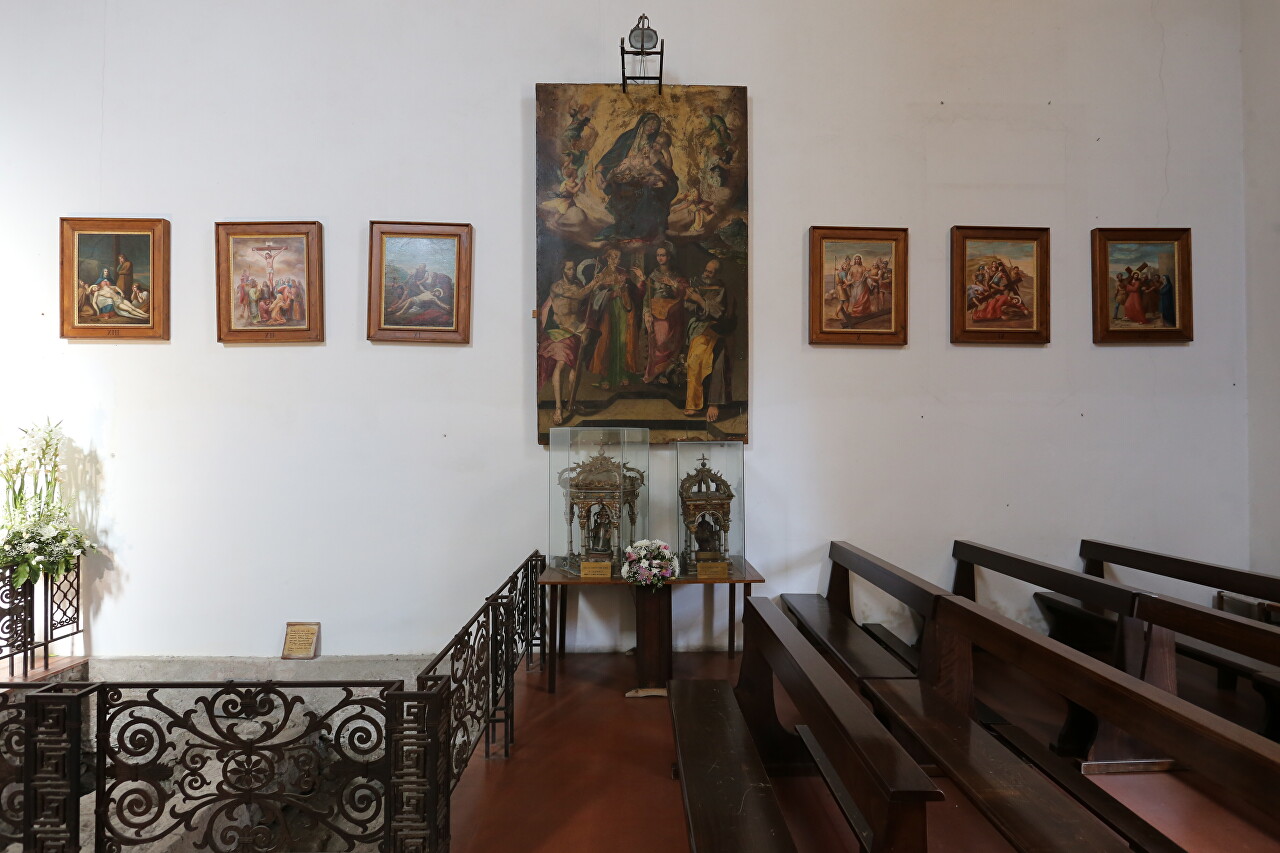
During the restoration, a crypt with a date of 1663 was found under the floor of the church. Excavations also revealed ruins of masonry dating back to the Greco-Roman era. Now this place is surrounded by wrought iron railings.
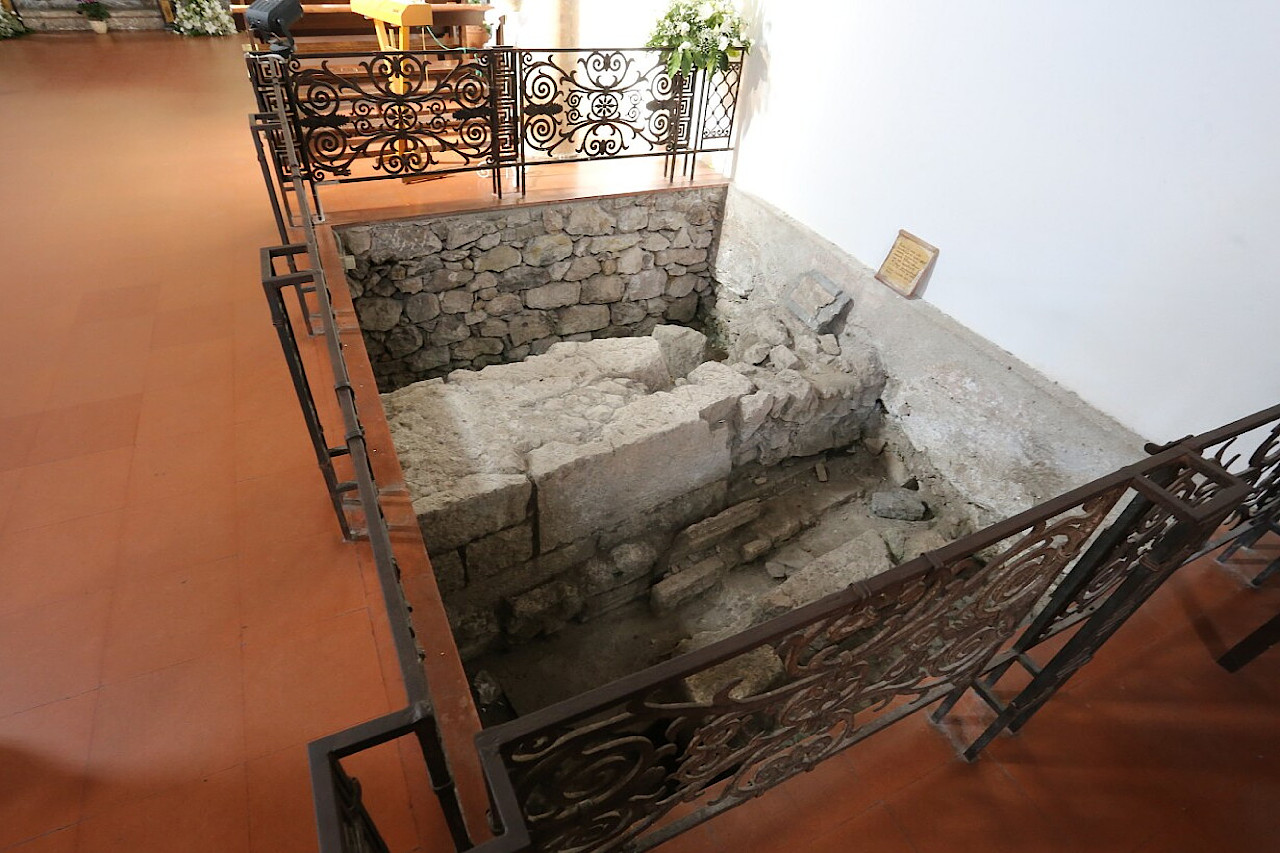
Next to it is a table with two elaborate models of the papal throne. According to the plaque, it is a gift to Taormina from Concettina Sgroi.
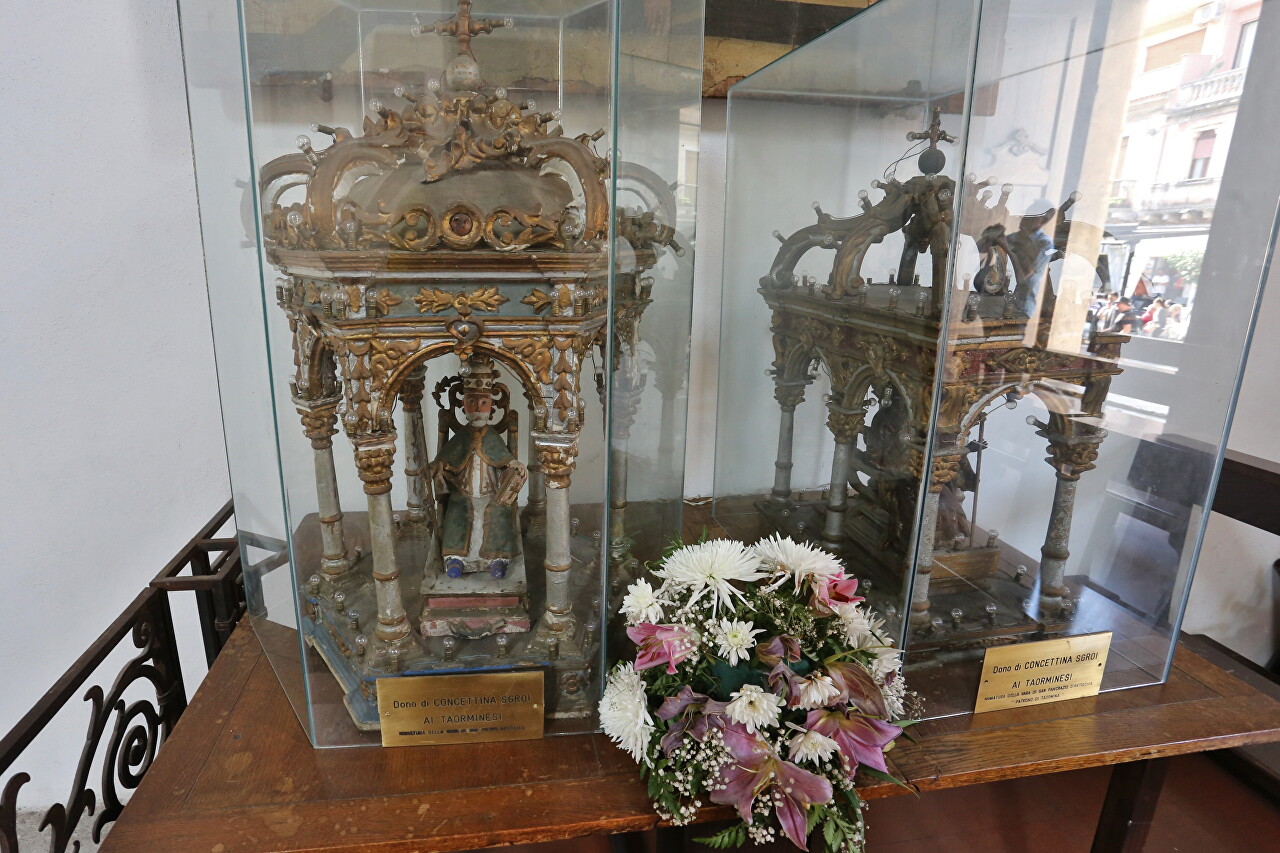
And, finally, pay attention to the wooden ceiling, made according to the technology of Roman buildings.
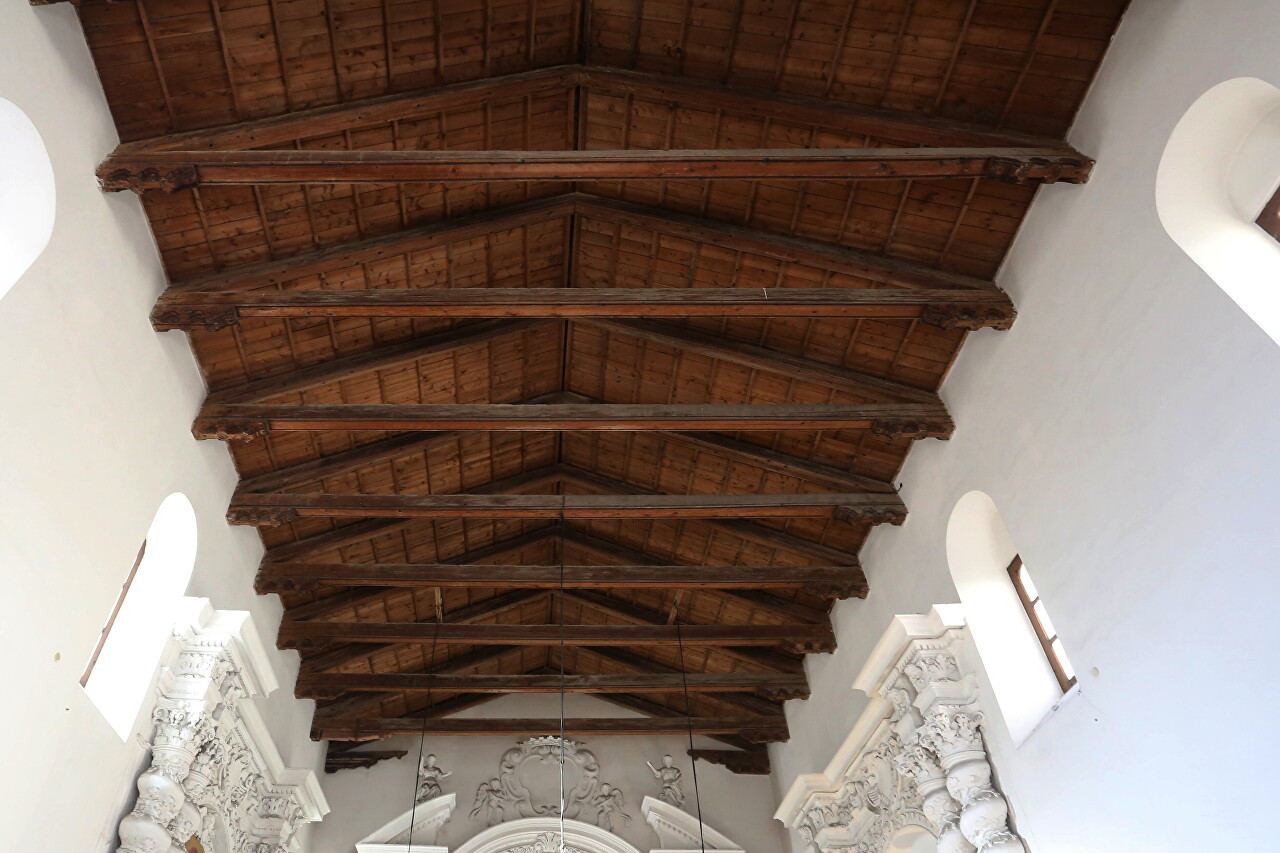
After the Second World War, the church stood in disrepair for more than 40 years, in the seventies, its restoration began and on November 25, 1977, the first mass was held here. Now the church is open daily from 9 to 20 hours.
